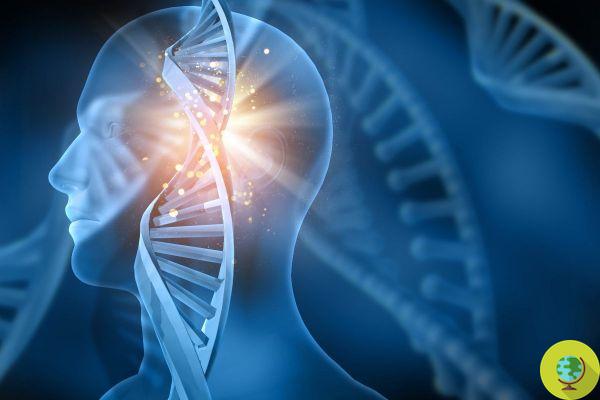
Our DNA is very similar to that of chimpanzees - what then are the differences between our species and theirs?
Our DNA is very similar to that of chimpanzee 'cousins' - but how is it that we have been able to produce civilization, architecture and language
Human DNA is very similar to that of the chimpanzee which remains, from the evolutionary point of view, our closest relative - and this suggests the descent from a common ancestor: about 6 million years ago, the evolutionary paths of the two species separated, giving life to the modern chimpanzee and the Homo Sapiens. Now a new study conducted at Lund University in Sweden has tried to figure out which elements of our DNA make our brains different from that of our chimpanzee relatives.
Comparing the cells of humans and chimpanzees, it emerged that the latter use part of their DNA in different ways than ours - and this would be the key to the differences between us and them. It is a structural variant of DNA until now called junk-DNA by scientists because it did not seem to have a precise function until now, other than to produce proteins. But it is precisely these proteins that make the difference: evidently, at the basis of the evolution of the human brain there are much more complex mechanisms than previously thought, and many answers could be hidden in this "waste DNA" hitherto ignored by science.
(Read also: It's not just us! Even animals laugh heartily and do it for ancestral reasons)
Instead of studying living humans and chimpanzees, scientists they observed stem cells developed in the laboratory and transformed into brain cells - according to a revolutionary research technique developed a few years ago in Japan (the Japanese researcher who invented this method for "reprogramming" stem cells, Shinya Yamanaka, won the Nobel Prize for Medicine in 2012). Without the aid of this technique, it would not have been possible to conduct this study without causing damage to the animals and humans being observed.
I believe that the brain is the key to understanding what makes the human being 'human' - he explains Johan Jakobsson, among the authors of the study. - How was it possible for humans to use their brains to the point of building society, manifesting culture and art, developing technologies as advanced as those we possess today? Furthermore, our study could also contribute to providing answers to the questions relating to some psychiatric pathologies such as schizophrenia, which seems to belong only to human beings. But before we get to these answers, there is still a long way to go to decipher the functions of DNA so far not considered by science.
Follow us on Telegram | Instagram | Facebook | TikTok | Youtube
Fonte: Cell Stem Cell
We also recommend:
- “Stunning”: The DNA maps of grizzly bears correspond to indigenous language groups
- Mitochondrial DNA of a previously unknown human species discovered
- Animals experience emotional states similar to those of humans


























